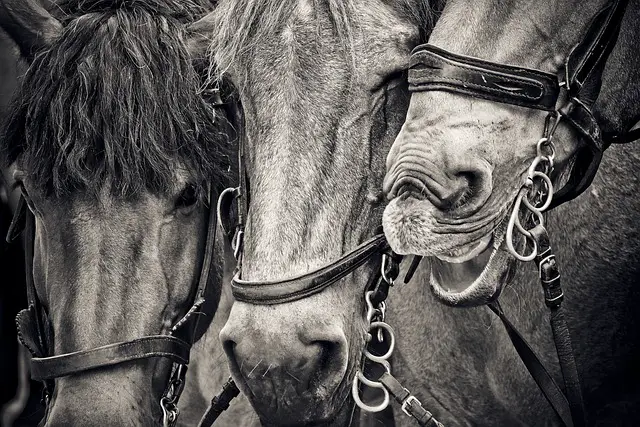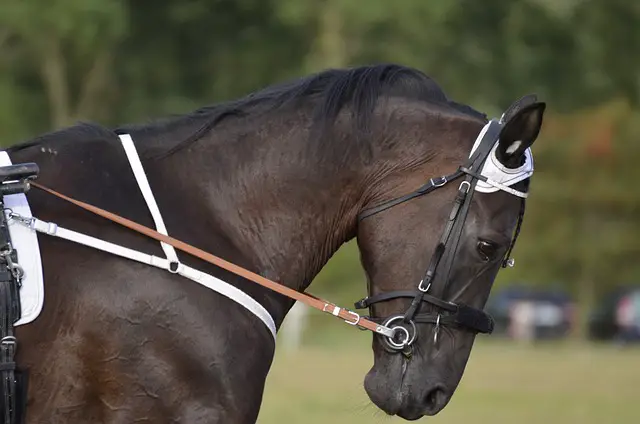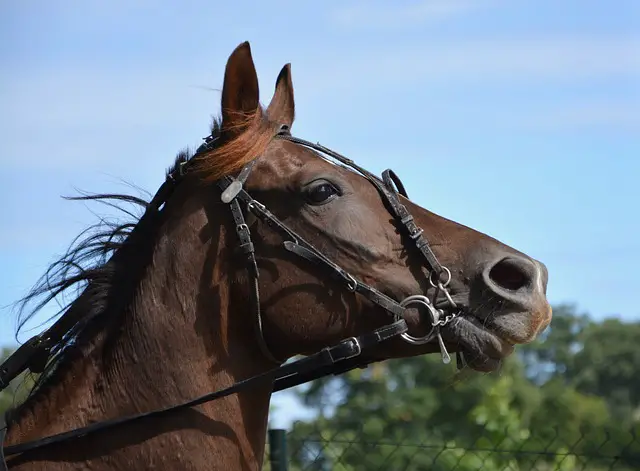Neck reining and direct reining are two fundamentally different techniques used for controlling a horse. Neck reining is a more advanced method that requires the rider to use subtle cues to guide the horse with one hand while allowing greater freedom of movement. On the other hand, direct reining involves using both hands to control the reins and provides more precise control over the horse’s movements.
What is neck reining?
Neck reining is a fundamental technique used in horse riding, particularly in Western styles of riding. It involves using the reins to signal the horse to turn by moving your hand and arm towards the direction you want to go. The pressure on the neck of the horse guides it in that direction.
The great thing about neck reining is that it allows riders to hold something other than their reins while still controlling their horse’s movements. This frees up one hand for tasks like opening gates or adjusting clothing.
It takes time and practice for both rider and horse to master neck reining properly. But once they do, it can be a more relaxed way of communicating with your mount compared to direct reining.
One common mistake beginners make when trying out neck reining is pulling too hard on one side or failing to release pressure after signaling a turn. These errors can confuse horses and lead them off course.
Mastering this technique opens up new possibilities for riders looking to improve their horsemanship skills beyond just holding onto reins tightly!
What is direct reining?
Direct reining is a technique used in horseback riding where the rider uses one hand to control the horse’s direction and speed. The reins are held separately, with one rein controlling the left side of the bit and one controlling the right. To turn left, for example, you would pull on the rein attached to the left side of your horse’s bit while simultaneously releasing pressure on your right-hand rein.
This method allows riders to have very precise control over their horses’ movements and is commonly used in disciplines such as dressage or show jumping. Direct reining requires a lot of practice and coordination between both hands since each hand controls only one part of the bit.
It is important to note that direct reining should not be confused with neck reining which involves using indirect signals from different parts of a rider’s body like legs and seat bones rather than reins alone. Riders can choose either method based on their preferences or discipline requirements. Regardless of what type they choose, proper training will ensure riders get effective results when communicating with their horses.
Neck reining Vs. Direct reining – Key differences
Neck reining and direct reining are two different techniques used to control a horse’s movements. In direct reining, the rider uses the reins to communicate with the horse by pulling on one rein or both in order to guide it in a particular direction. On the other hand, neck reining involves using slight pressure from the reins against the side of the horse’s neck while allowing them to move more freely.
The key difference between these two approaches is that while direct reining allows for more precise control over a horse’s movement, neck reining encourages more relaxed and natural riding. With neck reining, riders can keep their hands lower as they steer their horses which provides greater stability when performing advanced maneuvers.
In comparison, direct reining requires riders to have good coordination and timing skills in order to effectively give commands through manipulating each rein independently. Neck-reined horses tend to be less resistant than those trained through direct reigning because this technique relies on cues given through indirect means.
Whether you prefer neck or direct reign comes down to your personal preference as well as your goals for riding such as Western vs English style of riding. It’s important for riders not only learn about these methods but also practice them regularly so that they become comfortable switching between them based on changing circumstances during rides.
Which is better?
(Image by Hands off my tags! Michael Gaida from Pixabay)

When it comes to deciding between neck reining and direct reining, there is no one-size-fits-all answer. It all depends on your horse’s training level, riding style, and personal preference.
If you are looking for precision and control over every movement of your horse, then direct reining might be the way to go. With this type of rein aid, you have complete control over both the horse’s head and body movements.
However, if you prefer a more relaxed ride or need to use one hand for something else (such as opening a gate), then neck reining may be the better option. This method allows for more subtle cues that can easily guide the horse without requiring much pressure on the reins.
Ultimately, it is up to each rider to decide which method works best for them based on their individual needs and preferences. Both techniques have their advantages and can help riders achieve different goals depending on how they apply them in practice.
What is opening rein?
Opening rein is a technique used in horse riding that involves the use of your hand to open up one side of the horse’s neck. This action allows you to direct your horse’s movement towards that particular direction. It is commonly used in Western riding, where riders often rely on subtle cues and signals to communicate with their horses.
When using the opening rein technique, it is important to ensure that you maintain contact with both reins at all times. You should also be careful not to pull too hard on either rein as this can cause discomfort or confusion for your horse.
The opening rein technique can be particularly useful when navigating tight turns or obstacles during a ride. By using this method, you can guide your horse around corners smoothly without disrupting its momentum.
If you are new to riding or unfamiliar with the opening rein technique, it is advisable to seek guidance from an experienced instructor before attempting it yourself. With practice and patience, however, anyone can master this useful skill and improve their overall horsemanship abilities.
What is Western reining vs English reining?
Western reining and English reining are two distinct styles of horse riding that have their own set of rules, equipment, and techniques. The primary difference between the two is in the way that riders use reins to communicate with their horses.
In Western reining, riders typically use a single rein held in one hand to control the horse’s movements. They rely heavily on neck-reining techniques to guide their mount through complex maneuvers such as spins and rollbacks.
On the other hand, English reining involves using both hands on separate reins to direct the horse’s actions. Riders must develop a strong sense of balance and coordination while maintaining contact with their mount throughout various gaits like trotting or cantering.
While these two styles may seem very different at first glance, they share many similarities when it comes down to fundamentals like proper posture and communication with your horse. Ultimately whether you prefer English or Western style depends on your personal preference as well as what type of riding you plan on doing most often
How many reining patterns are there?

There are a variety of reining patterns that riders can choose from. Each pattern consists of specific maneuvers that test the horse and rider’s ability to perform precise movements with speed and agility.
The National Reining Horse Association (NRHA) recognizes 10 official patterns for competition purposes. These patterns range in difficulty from beginner to advanced levels, requiring more complex combinations of spins, sliding stops, lead changes and circles as you go up the levels.
Typically, each reining pattern will have several mandatory maneuvers such as large fast circles at both the lope and trot, rollbacks where the horse is asked to stop on its hindquarters while changing direction quickly, flying lead changes done at speed during which the horse switches leads mid-stride or spin turns where horses must rotate around one foot while maintaining forward momentum.
Reiners need to memorize each element of their chosen pattern thoroughly before entering an arena because they cannot be coached once inside it. They only have a few minutes to execute all elements according to judges’ standards precisely.
Featured Image By – JackieLou DL from Pixabay








